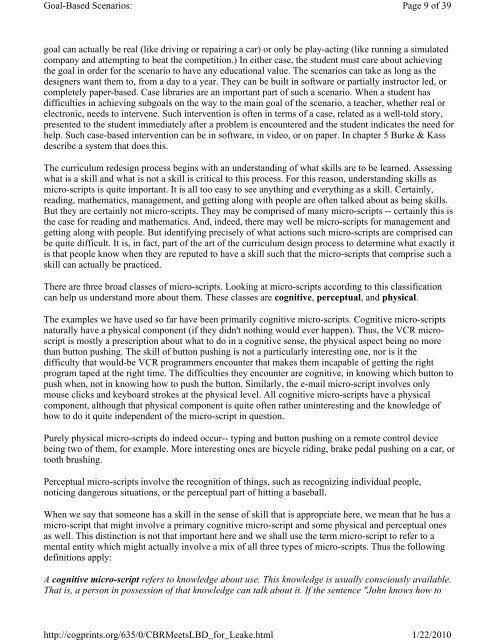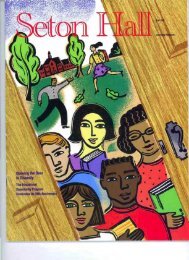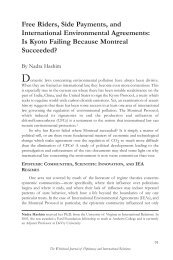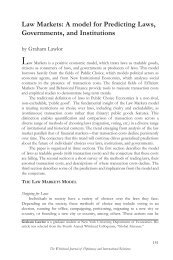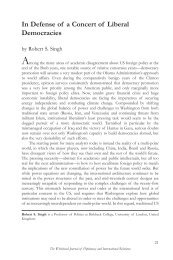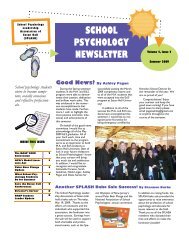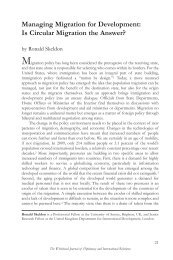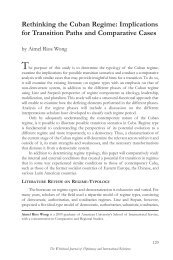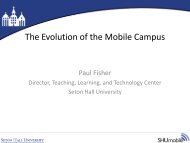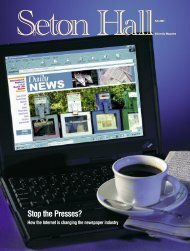Case-Based Reasoning Meets Learning by Doing
Case-Based Reasoning Meets Learning by Doing
Case-Based Reasoning Meets Learning by Doing
Create successful ePaper yourself
Turn your PDF publications into a flip-book with our unique Google optimized e-Paper software.
Goal-<strong>Based</strong> Scenarios:<br />
goal can actually be real (like driving or repairing a car) or only be play-acting (like running a simulated<br />
company and attempting to beat the competition.) In either case, the student must care about achieving<br />
the goal in order for the scenario to have any educational value. The scenarios can take as long as the<br />
designers want them to, from a day to a year. They can be built in software or partially instructor led, or<br />
completely paper-based. <strong>Case</strong> libraries are an important part of such a scenario. When a student has<br />
difficulties in achieving subgoals on the way to the main goal of the scenario, a teacher, whether real or<br />
electronic, needs to intervene. Such intervention is often in terms of a case, related as a well-told story,<br />
presented to the student immediately after a problem is encountered and the student indicates the need for<br />
help. Such case-based intervention can be in software, in video, or on paper. In chapter 5 Burke & Kass<br />
describe a system that does this.<br />
The curriculum redesign process begins with an understanding of what skills are to be learned. Assessing<br />
what is a skill and what is not a skill is critical to this process. For this reason, understanding skills as<br />
micro-scripts is quite important. It is all too easy to see anything and everything as a skill. Certainly,<br />
reading, mathematics, management, and getting along with people are often talked about as being skills.<br />
But they are certainly not micro-scripts. They may be comprised of many micro-scripts -- certainly this is<br />
the case for reading and mathematics. And, indeed, there may well be micro-scripts for management and<br />
getting along with people. But identifying precisely of what actions such micro-scripts are comprised can<br />
be quite difficult. It is, in fact, part of the art of the curriculum design process to determine what exactly it<br />
is that people know when they are reputed to have a skill such that the micro-scripts that comprise such a<br />
skill can actually be practiced.<br />
There are three broad classes of micro-scripts. Looking at micro-scripts according to this classification<br />
can help us understand more about them. These classes are cognitive, perceptual, and physical.<br />
The examples we have used so far have been primarily cognitive micro-scripts. Cognitive micro-scripts<br />
naturally have a physical component (if they didn't nothing would ever happen). Thus, the VCR microscript<br />
is mostly a prescription about what to do in a cognitive sense, the physical aspect being no more<br />
than button pushing. The skill of button pushing is not a particularly interesting one, nor is it the<br />
difficulty that would-be VCR programmers encounter that makes them incapable of getting the right<br />
program taped at the right time. The difficulties they encounter are cognitive, in knowing which button to<br />
push when, not in knowing how to push the button. Similarly, the e-mail micro-script involves only<br />
mouse clicks and keyboard strokes at the physical level. All cognitive micro-scripts have a physical<br />
component, although that physical component is quite often rather uninteresting and the knowledge of<br />
how to do it quite independent of the micro-script in question.<br />
Purely physical micro-scripts do indeed occur-- typing and button pushing on a remote control device<br />
being two of them, for example. More interesting ones are bicycle riding, brake pedal pushing on a car, or<br />
tooth brushing.<br />
Perceptual micro-scripts involve the recognition of things, such as recognizing individual people,<br />
noticing dangerous situations, or the perceptual part of hitting a baseball.<br />
Page 9 of 39<br />
When we say that someone has a skill in the sense of skill that is appropriate here, we mean that he has a<br />
micro-script that might involve a primary cognitive micro-script and some physical and perceptual ones<br />
as well. This distinction is not that important here and we shall use the term micro-script to refer to a<br />
mental entity which might actually involve a mix of all three types of micro-scripts. Thus the following<br />
definitions apply:<br />
A cognitive micro-script refers to knowledge about use. This knowledge is usually consciously available.<br />
That is, a person in possession of that knowledge can talk about it. If the sentence "John knows how to<br />
http://cogprints.org/635/0/CBR<strong>Meets</strong>LBD_for_Leake.html<br />
1/22/2010


